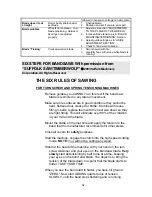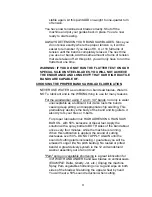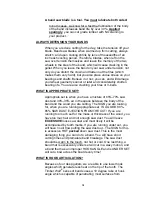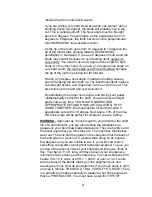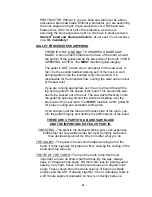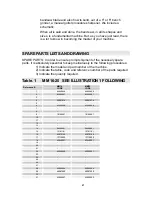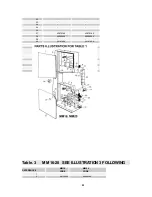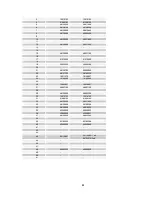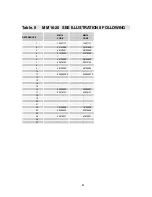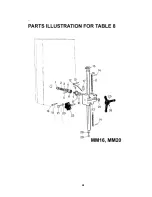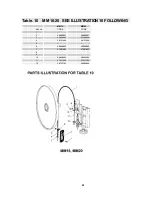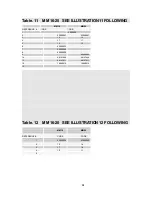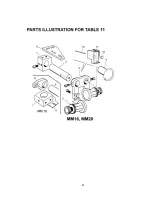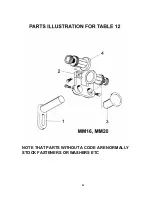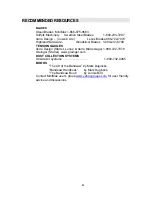
19
medium-hard to medium-soft woods.
If you are cutting very hard wood like white oak, walnut, ash or
anything frozen throughout, the blade will probably rise in the
cut. This is called push-off. The hook angle must be brought
back to 8 degrees. You will notice as the angle goes from 10
degrees to 8 degrees, the tooth becomes more perpendicular,
thus INCREASING its penetration factor.
As the tip of the tooth goes from 10 degrees to 12 degrees the
tip of the tooth starts pointing forward DECREASING
penetration in hardwood. If you use 8 degrees on soft wood the
blade may chatter because it's over feeding itself, unless it's
very knotty. You need to use an 8 degree hook angle for hard
knots. On the other hand, if you use a 12 degree hook angle on
very hard wood, the tooth skips over the hard surface because
the tip of the tooth is pointing too far forward.
Having a 12 degree hook angle in hardwood cutting causes
push-off making the band ride up. The band locks itself in place,
cuts straight across, and drops down at the end of the cut. This
also burns up the band and over tensions it.
By articulating the proper hook angle, and having your gullet
mathematically correct for the pitch, you will achieve straight
grade cuts every time. YOU MUST UNDERSTAND
APPROPRIATE SET AND HOOK ARTICULATION, THEY
WORK TOGETHER. We manufacture for North America 5
appropriate sets with a 10 degree hook angle. 70% of the time
this hook angle will be perfect for whatever you are cutting.
WARNING:
Again just as I have brought to your attention the short
life of a dial indicator, you are also trusting the templates and
gauges on your band saw blade sharpeners. They are hardly set at
the exact angle that you think they are. The machines themselves
wear out. The pins and the guides in the sharpener that the back of
the band rides on, wear out. If a band starts riding on an angle a
few degrees and you are unable to see it, you will know there's
something wrong after running that resharpened band. To give you
an idea of the amount of wear your sharpener will receive, think of
this. Your band, if 14 ft. long, will travel around your sharpener a
minimum of twice during each sharpening. You have sharpened 50
bands. 50 x 14 ft. twice or 28 ft. = 1,400 ft. or over a 1/4 of a mile
with the back of the bands rubbing on the alignment pins and
wearing them out. How do you determine if your hook angle is right,
and see it. Simple: THERE IS A TOOL FEW OF YOU HAVE. There
is a specific tool made especially to measure your hook angle and
that's a PROTRACTOR. You must have a specific TYPE OF
Содержание MM 16
Страница 25: ...24 ...
Страница 27: ...26 ...
Страница 29: ...28 ...
Страница 32: ...31 ...
Страница 33: ...32 NOTE THAT PARTS WITHOUT A CODE ARE NORMALLY STOCK FASTENERS OR WASHERS ETC ...












